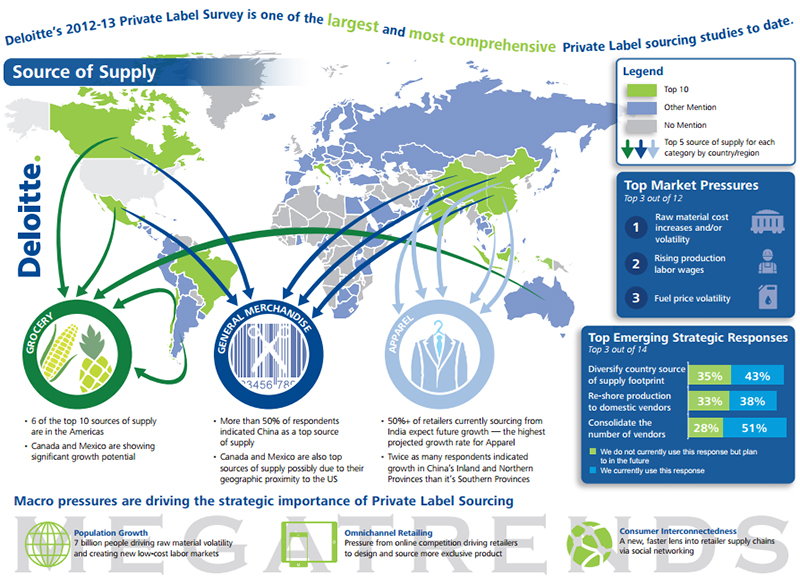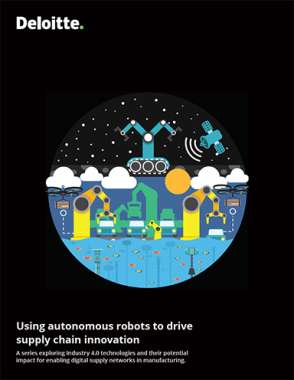Re-Shoring: Is it Fab or Fad?
Re-shoring activities are underway, that much is for sure. But is this part of a larger trend that brings the fabulous news that the U.S. economy is anxiously awaiting? Or is re-shoring just a fad?
Before re-shoring be-came in vogue, companies like Caterpillar and General Electric had already starting moving some of their production back to the U.S.
Faster than you can say tsunami, a wave of re-shoring announcements rolled into press rooms: Motorola’s Moto X became the first smartphone made in the U.S. in years; Apple announced plans to produce the Mac Pro in Texas; and Lenovo ThinkPads started rolling off the line at a plant in North Carolina.
More recently, the chemical industry became a hotbed of re-shoring activity when Dow announced plans to restart and build new plants in Louisiana and Texas, while LyondellBasell and several fertilizer producers launched their own expansion and construction activities to meet domestic demand.
With marquee corporate names jumping on the bandwagon, re-shoring has all the makings of a trend. But despite the publicity, the trade value of these re-shoring examples is Lilliputian when compared to the Gulliver that is the U.S. trade deficit.
While the trade deficit recently stopped growing, the balance between the U.S. and China didn’t exactly swing back in our favor. Exports of goods made in America and shipped to China still only amount to about 20 percent of what Chinese manufacturers send to the U.S., according to the Manufacturers Alliance for Productivity and Innovation.
Yet, several factors point to a landscape that’s changing in favor of U.S.-based manufacturing. They include abundant and affordable energy in the form of natural gas; a technically well-educated and increasingly productive workforce; and cheap capital provided by the Fed. Other non-U.S. factors are bolstering the case for re-shoring—everything from rising Chinese labor costs and ever-present concerns around IP protection, to a desire for shorter supply chains that reduce risk, transportation costs, and inventory, and allow companies to be more responsive to changes in fickle demand.
Finally, there are intangibles such as the marketing power of the Made in America label and the way positive publicity builds goodwill in Washington. Taken together, these factors add up to as much as a two to three percentage point drop in U.S. unemployment, according to some experts.
Is Re-shoring Here to Stay?
Despite the good news, there are skeptics. Case in point: Much of the re-shoring activity so far seems to be assembly-related, not true manufacturing-from-scratch. As a result, the bulk of the value-added activities may still reside with parts and components manufacturers located outside of U.S. borders. Also, two-thirds of the companies that re-shored did so by bringing activities back to existing facilities.
In other words, they re-opened mothballed plants rather than expand their footprints, even though they are flush with cash and old plants are less efficient than new plants.
One explanation could be that manufacturers are not all that confident that re-shoring is here to stay. In that light, restarting old facilities may be the most prudent stance in the re-shoring debate, especially if many of the factors that drive the trend are still in flux.
For instance, although the labor cost gap between the U.S. and China is shrinking, U.S. labor costs may also rise as companies struggle to fill the skilled positions being relinquished by retiring baby boomers at a rate faster than new talent enters the field.
Energy costs are another big factor on which the last word hasn’t been spoken. Yes, we are benefiting now from the shale gas boom, but other regions, including China, are sitting on sizeable shale gas reserves, even if they are more difficult to extract with current technologies. Decisions about how much gas to export and about whether to build the Canada pipeline will impact energy costs and could alter the equation.
Among the “intangibles,” Made in America is fashionable, especially after Wal-Mart’s pledge to buy $50 billion of U.S.-made products. But whether consumers are willing to pay a premium for Made in America is still untested. Finally, the political stalemate in Washington has delayed important policy decisions on issues such as immigration and taxes, which creates uncertainty. It is therefore not surprising that many companies are not comfortable to go “all in.”
Making it Stick
Still, there are a few things that could determine whether re-shoring is the real thing. For one, government can do its part, particularly at the federal level, by creating legal and fiscal frameworks that remove uncertainty and allow companies to make sound business plans.
State and local governments can create the right business environment through tax incentives, accelerated permitting and, in general, through increasing the ease of doing business. For example, Greek yogurt maker Chobani built a $450 million plant in Idaho in record time because state government was always two weeks ahead with permits and other documents.
State governments can also facilitate the creation of “business eco-systems”, that is networks of suppliers, service providers, 3PLs, academia, stable and well-run unions, and R&D centers that manufacturers require to be successful. And they can work with local universities to modify the curriculum to better fit the requirements of manufacturers. One example: STEM needs to be a major priority, given that the major shortage will primarily manifest itself in the engineering ranks.
Government can’t solve these problems alone. Companies need to chip in as the current U.S. education system is not set up to develop talent quickly enough to fill the shortage of skilled labor on its own. They can do this by working with community colleges, tapping into “new” overlooked talent pools such as veterans and women, and by working together within their industry to develop common, industry-specific skills in much less time than the traditional education channels.
In short, companies need to develop a human capital strategy to address worker shortages and help workers evolve their skills in line with the advanced technology that they will be operating.
At this point it’s still unclear whether re-shoring is only a temporary fad or something more fabulous for the U.S. economy. Maybe U.S. manufacturing’s recovery is only part of broader economic cycle? Or it’s primarily linked to the low dollar exchange rate and as such is a short-term phenomenon? Or maybe China’s manufacturing base is just a giant on clay feet, stuck in a swamp of labor inflation that even strong backing from the Chinese government can’t pry loose and the U.S. is indeed gradually becoming the world’s manufacturing powerhouse again.
Because the outcome is far from certain, before jumping on the re-shoring bandwagon, you should carefully assess the timing, effort, and benefits as part of a thorough re-shoring business case. This includes understanding the underlying conditions that drive re-shoring attractiveness in your industry and testing multiple future scenarios that make assumptions on how those conditions will change. Only then would you know if re-shoring is the right decision for you.
Editors Note: Patrick Van den Bossche is a partner in A.T. Kearney’s Washington, D.C., office and leader of the Americas Operations Practice. He can be reached at [email protected].
View SC24/7 content on “ReShoring”














